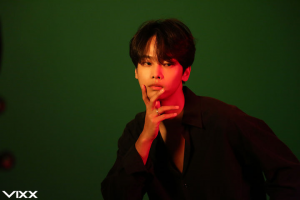
The Hallyu industry has an inherent brake in its system: mandatory military enlistment for all able-bodied men aged 18–35. In 2018, the maximum age that military service can be deferred for non-medical reasons was reduced from 30 to 28 (international age). This kick-started a wave of idol enlistments. This includes members in early third-generation groups (2009 debuts) like Highlight and Infinite, whose impending enlistments were expected, but also younger third-gen groups (2012 debuts) like VIXX, BtoB, and Exo. Some enlistments were brought forward by as much as two years under the amendments. These changes will also bring forward the enlistments of BTS and Got7, and rising fourth-gen groups Monsta X and SF9, who have older members despite debuting later.
Last week, Exo’s D.O. announced his plan to enlist this summer, two years before he would be required to do so. The decision is likely made with his acting career in mind. He has been cast in Along with the Gods 3, with filming and production scheduled for 2021. Under the original regulations, he would have to enlist in 2023, allowing him two years of activities riding on the popularity that the blockbuster would provide. Under the new rules, he has to enlist right after completing the project in 2021.
D.O.’s decision is indicative of the changes that other younger idols have to grapple with under new laws. Pat and Qing weigh in on how idol enlistments have been handled in the past, and discuss changes in the K-pop scene that influence how enlistments will be managed in the near future.

Pat: We can first look to the past. Usually, the eldest member enters the required year and the rest follow as required, presumingly to extend promoting. For most, the first member entering would signal a hiatus of group activities. For some, most notably Super Junior, the group is able to promote in as a whole and in smaller units. TVXQ is an anomaly. Both members entered in 2015 and resumed promotions within two months of Changmin’s discharge.
Shinhwa followed the usual route. Eric was the first member to enlist in 2008, with the last member, Minwoo, discharged in 2012. Between 2008 and 2012, other members promoted solo activities before resuming group activities almost immediately after Minwoo was discharged. But between these years, changes have happened. Hallyu’s reach is wider than ever before, meaning idols have more to lose if they were to leave for the period of time that Shinhwa have.

Qing: As one of our writers noted, comeback concerts of first-gen idols sell very well, pointing to the fact that they still have strong domestic fanbases. Like first-gen idols, second-gen groups like Super Junior and TVXQ benefit from having promoted in a much less saturated scene.
While second-gen groups began seeing a rise in international fans, they mostly cultivated large domestic fanbases. The international reach of K-pop really kicked off in 2009, catalyzed by hits like SNSD’s “Gee”, Super Junior’s “Sorry Sorry”, 2PM’s “Again and Again”, and monster rookie debuts like 2NE1. Most third-gen groups debuting in this transition period (Highlight, BtoB, VIXX) balanced a secure domestic fanbase with a growing international one, but groups like Exo, BTS, and Got7 met with explosive popularity in the international fandom.
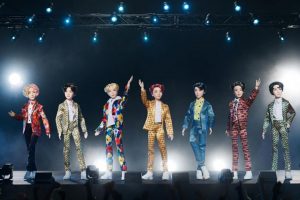
In response to the changing composition of their fandoms, younger third-gen groups began marketing more aggressively outside of the traditional Korean and Japanese markets. Amongst other factors, strategies capitalizing on the power of social media aided the process. These groups ventured into the American market more than their seniors, and also found more success in international tours. Their fanbases grow faster, they chart well, and achieve higher album sales thanks to their international reach. And yet, like you’ve pointed out, this is a double-edged sword when we factor in enlistments.
Pat: It’s an interesting point you make: second-gen groups can cultivate stronger domestic fanbases due to a less saturated market. It stands to reason that when there were less idol groups, such as the mid- to late-2000s, companies were better able to make their group flourish. This is important for when the male idols go into military service, they will have a domestic fanbase waiting post-enlistment.
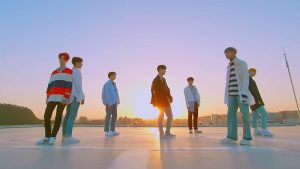
This isn’t necessarily the case for the current crop of male groups. Looking at the various lists of debuts for each year makes it clear that more idol groups are debuting. All groups are competing to become popular, as popularity will lead to more CF deals, album and digital sales, and other TV appearances. There is more supply in idol groups, but not necessarily more demand in terms of the domestic audience for idol groups. In South Korea, fanbases also don’t change fandoms as easily, nor are multi-fandoms as abundant as in the international fandom.
The domestic audience remains stable, but the international audience grows considerably; the promise of reaching international audiences prompts more groups to debut and promote. This also means that there will be more options for fans to transfer their attention onto. That is not to say that all groups are the same and therefore replaceable, but when a group goes on hiatus for military enlistment, a number of fans may find their interest in another group.

Qing: That’s a good observation about the differences in Korean and international fan culture. It may have to do with different ways of engaging in fan activity. While all fans consume content through the internet, domestic fans have more opportunity for closer interactions: music shows, fansigns, and concerts–artist-specific or multi-artist, such as Dream Concert and the year-end music festivals. From the beginnings of K-pop, it was also considered taboo to like more than one group, since the groups back then were perceived as direct competitors (think of the H.O.T./ Sechskies rivalry depicted in Reply 1997). The negative connotations of being multi-fandom have since dissipated, but given how much time, money, and effort is invested in domestic fan activity, Korean fans usually keep to one group.
International fans, in comparison, rely more heavily on virtual means of connecting with artists. It’s easy for them to access content from multiple groups online, and not having grown up in Korea, they don’t share the same single-fandom mindset. Because they don’t see artists or interact with them at a close range very often, they perhaps naturally lean towards more groups to achieve a similar level of emotional fulfilment. I’ve noticed that international fans transfer their affections to new groups more commonly. This means that the huge international fanbases that newer boy groups pull in are also more volatile.
Pat: With all this in mind, what could the newer groups do to limit the impact on their career?

Qing: The usual approach — have every member defer enlistment to the latest possible age — typically results in a prolonged hiatus of at least four years, with only some respite in the form of members’ solo activities. This can spell doom even for popular idol groups. Consider how B.A.P’s year-long lawsuit hiatus affected their career despite the hype from their debut. Even Beast/Highlight suffered a similar fate despite having an established six-year career and an even larger domestic and international fanbase.
There are two alternatives to this drawn-out enlistment plan. The first is to divide the enlistments into batches, allowing younger members to promote as sub-units while the older members serve, and have the older members form sub-units when discharged, while younger members enlist. The hiatus will still be at least four years, but compared to solo activities, there’s greater potential to maintain awareness and artistic development under the group’s name.
The second option is to bite the bullet and allow all the members to enlist together, shortening the hiatus to two years. This sounds frightening for fans and risky for idols, but considering plans to reduce the service period from 21 months to 18 months by 2022, it might be feasible with good long-term planning.
Of course, whether these alternatives work really boils down to the specifics of each group: where they are at in their career, the members’ age gaps, and their competencies and niches.
Pat: Let’s play devil’s advocate and apply these to some upcoming groups that will start enlistments.

We could apply the first approach with Exo. The members are popular and have a relatively normal age gap: Xiumin is the eldest, being born in 1990, with Kai and Sehun being born in 1994. Excluding Lay, there are eight members. Aside from Xiumin and D.O, the elder members — Suho, Baekhyun, Chen, Chanyeol — could enter this year, and the younger two — Kai and Sehun — next year. That would give them three years between full group activities. During this time, the younger duo could promote as a performance-based sub-unit, then a year-long gap, and the older five could promote as a vocally inclined sub-unit when they are discharged. This would give a total of just one year without any Exo activities, with two years of unit activities. If they were to follow the usual pattern, it would have resulted in four years of activities without the full group.
For the second approach, where all members enter in the same year, there’s Got7. The eldest are JB and Junior (born in 1994) and the youngest is Yugyeom (1997). Bambam, Jackson, and Mark aren’t Korean, meaning these three can continue solo activities. If all four Korean members were to enter in 2022, there’d only be 18 months without a complete Got7 promotion.

Another group that would benefit from entering the same year is BTS. The eldest member, Jin (1992), has to enlist in 2020. This comes as BTS continually grows in popularity both domestically and internationally. When members start enlisting, it will be a sudden brake in group activities. BTS are different from previously mentioned groups — they have been promoted as a group, not as a group with the potential for sub-units. Their mixtapes have been personal projects rather than commercial ventures.
Qing: Compared to Exo, Got7, and BTS, who have established themselves, the reduction in maximum age for deferment is trickier for younger groups like Monsta X and SF9.
Monsta X have found a unique sound and image, but they are still on the rise as leader Shownu’s 2020 enlistment closes in. It’s also unfortunate that all of their main vocalists, especially Kihyun who is crucial to their sound, have to enlist by the same year (2021). This is followed closely by Hyungwon and Joohoney (2022) and I.M (2023).
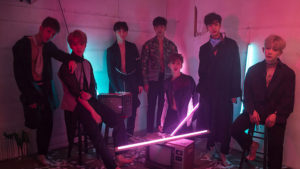
What might work for them is a combination of the Super Junior and batch methods. To continue establishing Monsta X’s presence, they could promote as a group without Shownu — he’s a great dancer, but the rest are competent too. When the three vocalists enlist, the remaining three can form a sub-unit. In 2022, when Hyungwon and Joohoney enlist and Shownu is discharged, he can form a sub-unit with I.M. When it’s I.M’s turn to be drafted in 2023, assuming the shortened service period is in effect, the rest would have returned. They can then start to promote as a group again, with I.M joining them in 2025.
Two years into their career, SF9 are still experimenting and do not have the same industry presence and assured identity of Monsta X. They also have a huge age gap: leader Youngbin and main vocalist Inseong have to enlist by 2021, but maknae Chani isn’t due to be drafted until 2028. But their advantages include more members, and many competent vocalists and rappers spread over different ages.

Given this, promoting with missing members might work best to secure the group’s position. Even with Youngbin and Inseong gone, they still have main rapper Zuho and another main vocalist Rowoon, who don’t have to enlist until 2024, when Youngbin and Inseong are back.
Pat: We’ve gotten potential scenarios for the alternative approaches to military enlistment. I think it’s only natural we also wonder how a company should handle the groups during the enlistment and after. SM Entertainment seem to have found a way that works: debut a boy group, establish them, then debut another boy group 3-4 years later. By doing so, there is another avenue for revenue when the first group goes on semi-hiatus for military enlistments. TVXQ and Super Junior are the same age range, Exo debuted in 2012, and NCT in 2016.
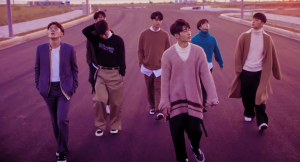
You can see this with other companies. JYP debuted 2PM in 2008 and Got7 in 2013. YG debuted Big Bang in 2006, with Winner debuting in 2013 and iKon in 2015. I would argue that Big Hit is also preparing for BTS’ hiatus with TXT’s debut earlier this year.
Qing: It’ll also be interesting to assess the different post-enlistment comeback approaches as we see more idol groups reunite in the next couple of years. But that’ll be a discussion for another day.
(Military Manpower Association, Insight Korea, SBS Australia, Yonhap News Agency. Images via Around Us Entertainment, Big Hit Entertainment, FNC Entertainment, Jellyfish Entertainment, JYP Entertainment, Shinhwa Company, SM Entertainment, Starship Entertainment.)


